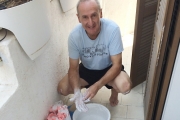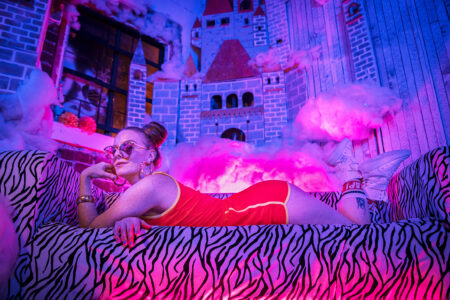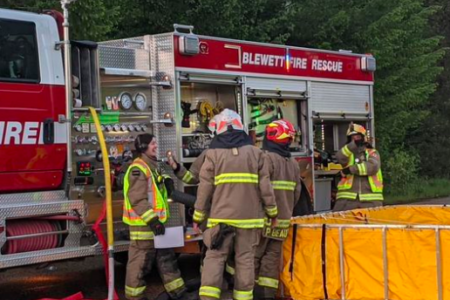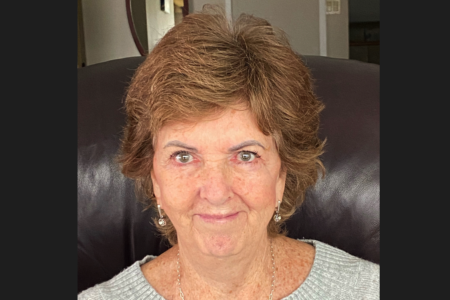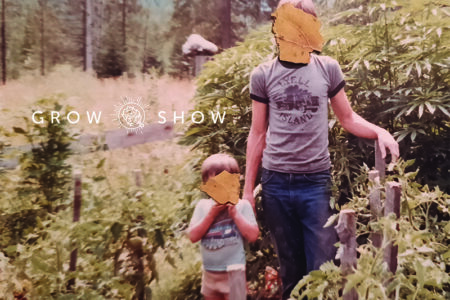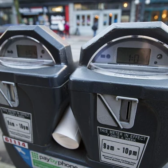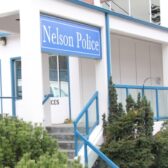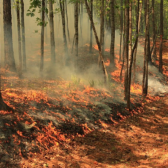Helping To Build Peace in Israel and Palestine
Peace seems more distant than ever in Israel, but Selkirk College instructor Denis Kleine is forging ahead with a project he hopes will act as a symbol of what can be achieved in the future.
Bloodshed and tension rises daily in the Gaza Strip as Israel and the Palestinian Islamist group Hamas continue the conflict that has taken a terrible toll on the region. With no end in sight to the struggle, earlier this month Kleine headed to the Middle East to get started on a sculpture project that promotes peace.
“When you look around the world there has been so much tension in that region seemingly forever,” says Kleine, who is the Metal Casting Instructor at Selkirk’s Nelson-based Kootenay Studio Arts. “It just seemed like a logical place to start.”
In 2010 Kleine created the sculpture Peace Symbol which was installed at the West Kootenay Regional Airport in Castlegar. Standing four feet tall, the bronze sculpture features a male and female standing back-to-back in a circle of hands that all come together to form a peace symbol.
Since the popular sculpture was installed, Kleine has wanted to expand the reach of the meaning and artistry of the piece by creating a series of Peace Symbol sculptures around the world. In the spring—prior to the recent explosion of strife in the Gaza Strip—Kleine got started on the project that would see a 12-foot version of Peace Symbol created for installation in Israel.
“This has been on my mind for a long time and I just couldn’t wait any longer,” says Kleine.
To make the project a reality, Kleine recruited Israeli sculptor Gadi Fraiman and Dutch sculptor Marielle Heessels to join him in making the $150,000 project a reality.
Turning it up a notch, the sculpture team has decided to include at least 40 hand casts of actual Israeli and Palestinian residents to bring a more authentic symbol to life. In middle July, Kleine traveled to Israel to meet with Fraiman and Heessels to get started.
Arriving only weeks after the most recent rise in hostilities in the Gaza Strip, the team got to work on finding willing participants who wanted to take part in the lasting beacon of peace. Despite the images seen on television around the world, Kleine says it wasn’t difficult to find both Israeli and Palestinians who wanted to be involved.
“Our first stop was Tel Aviv where we just started visiting coffee shops and telling people about the project,” says Kleine. “So many people willingly stepped forward. Casting the hands is a bit of a process and it became like performance art, it was a really cool experience.”
Heading into the Palestinian-controlled West Bank was a bit more of a challenge and the sculpture team was warned by some not to venture into the contentious territory. Undaunted, Kleine and his colleagues ventured into Bethlehem and beyond where they were met with equally open arms.
“I never really felt unsafe or in danger,” says Kleine. “I think there is more danger walking across the street in Nelson during a busy summer day.”
Over the 10-day period the three sculptors managed to cast 20 hands which will be used in the final sculpture. Kleine says he will need to return to Israel to complete the rest on a future trip.
Ultimately the sculpture team would like to see Peace Symbol placed in the small community of Neve Shalom which is a cooperative village midway between Tel Aviv and Jerusalem that was jointly founded in 1969 by Israeli Jews and Palestinian-Israeli Arabs. Meaning “Oasis of Peace,” Neve Shalom is an attempt to show that two peoples can live side-by-side peacefully.
With the sculpture still in its early stages, Kleine says financial support is required to get it to its final state. He has launched an Indiegogo campaign to help raise the needed funds which will allow for the completion of Peace Symbol.
“I believe in this project, so the idea is to get it going and I feel in my heart that the money will come,” says Kleine.
More determined than ever to make it happen, Kleine says his experience in Israel and Palestine has added new meaning to the project.
“It now has energy of its own,” he says. “All the people that are involved in getting their hands cast all have a story to be told. And even the experiences we’ve had so far, we’ve had a lot of doors closed, but a lot more doors opened. I think in the end more people will gravitate towards this and there will be more open doors which means more dialogue around peace.”
His optimism to bring small change through sculpture is not matched by a realistic view of what can be accomplished in the troubled region he witnessed first-hand. Kleine says the depth of the turmoil in Israel and Palestine is far too complex for most people, including himself, to grasp.
“I’m an eternal optimist so I think anything is possible,” says Kleine. “But there are so many questions and it is so complex… I’m just not sure. I think the average person on both sides want peace, but it is ultimately not going to be up to them.”
For more information on the Peace Symbol Project go to peacesymbolproject.moonfruit.com. To donate to the Indiegogo campaign head to indigogo.com and search “Peace Symbol Project.”
To find out more about programs and opportunities at Kootenay Studio Arts at Selkirk College head to selkirk.ca. There are still seats available in the Sculptural Metal, Textiles, Ceramics and Jewelry studio programs.
Photo caption: Selkirk College Metal Casting Instructor Denis Kleine with the materials he used to cast the hands of Israeli and Palestinians residents.



